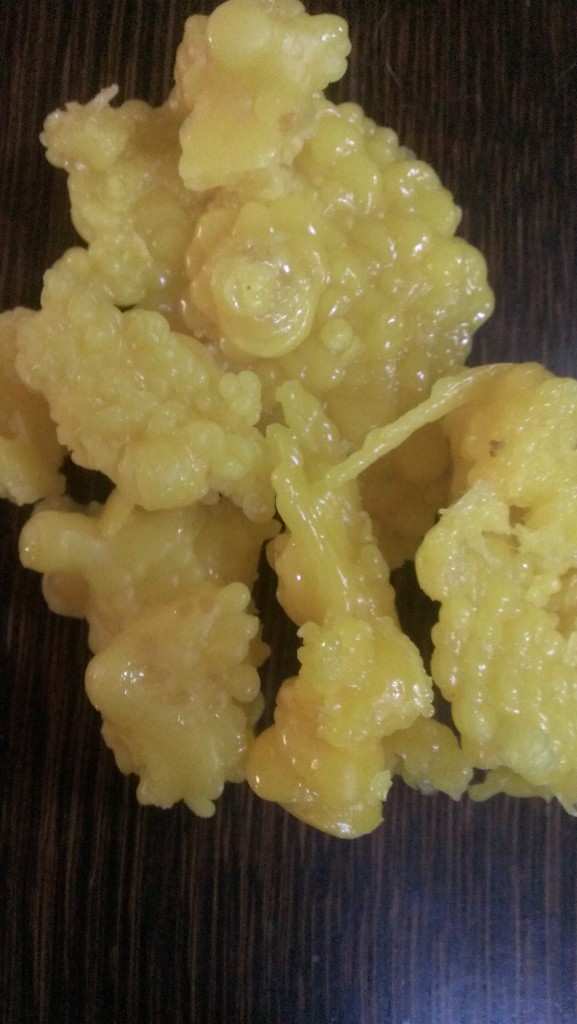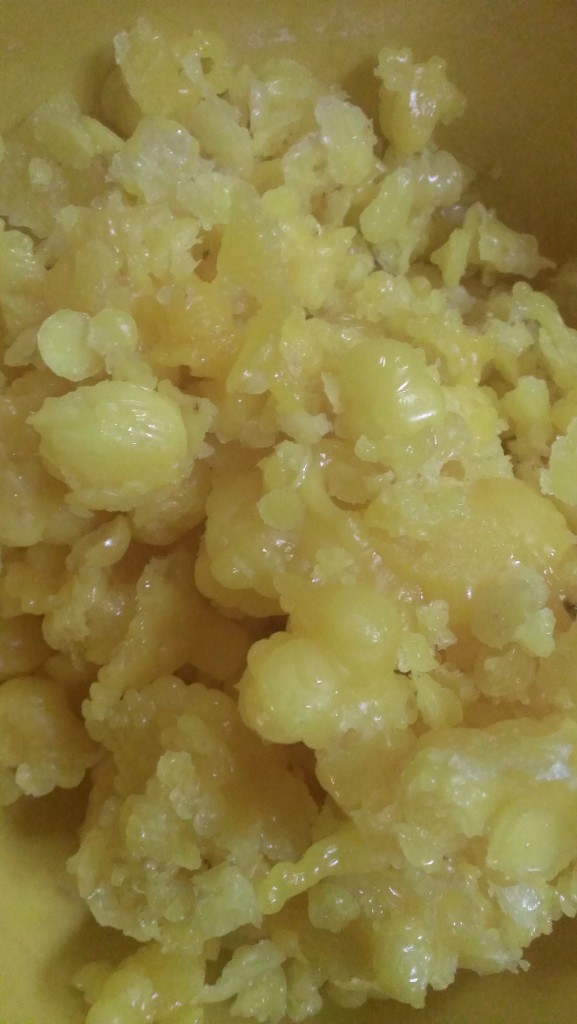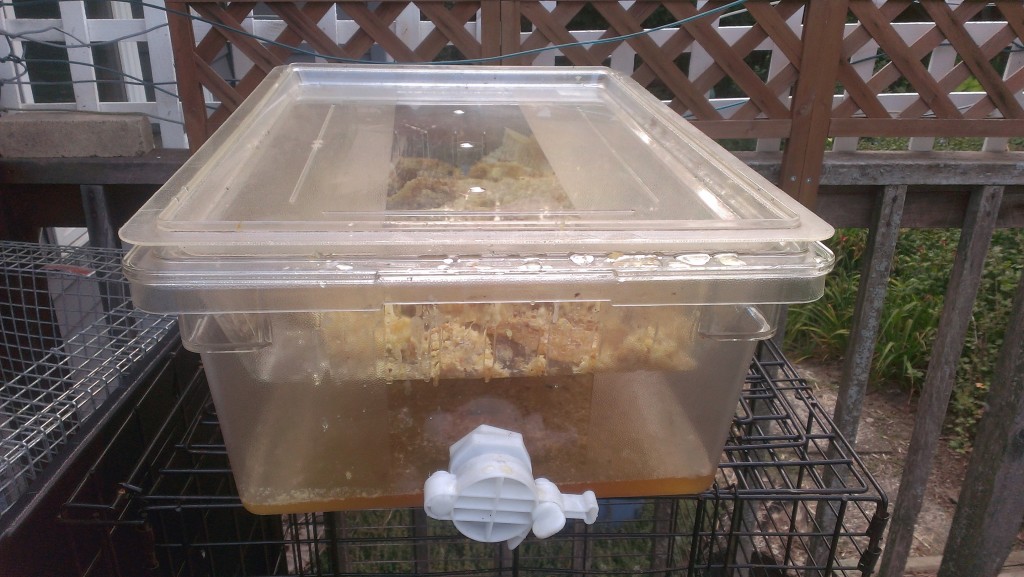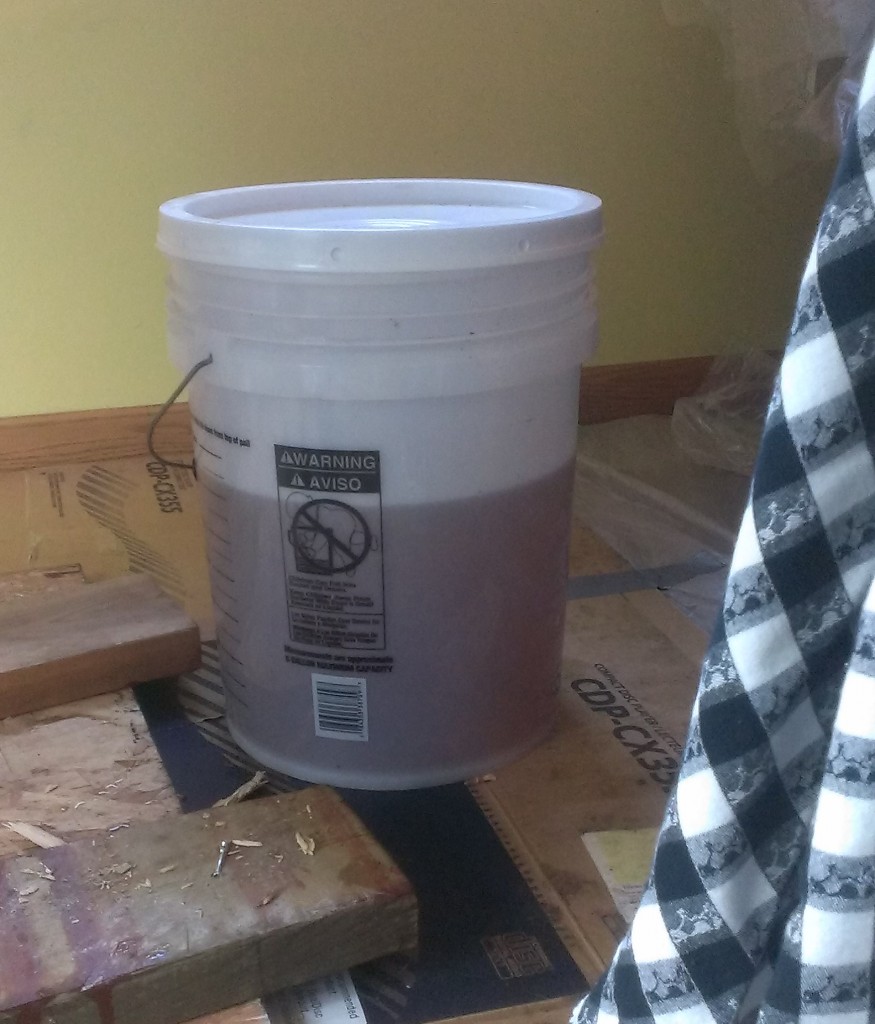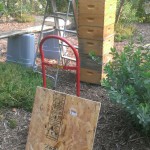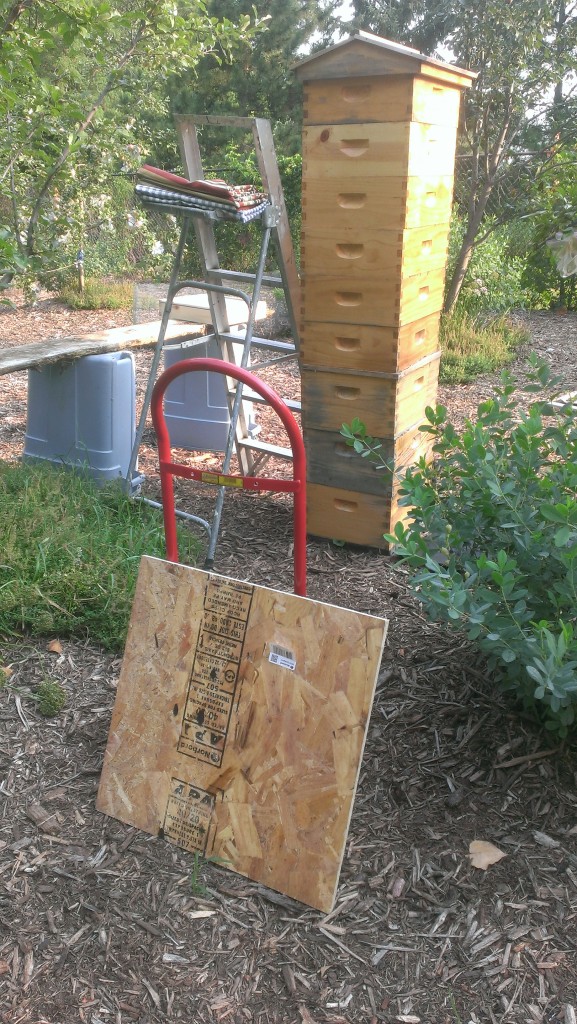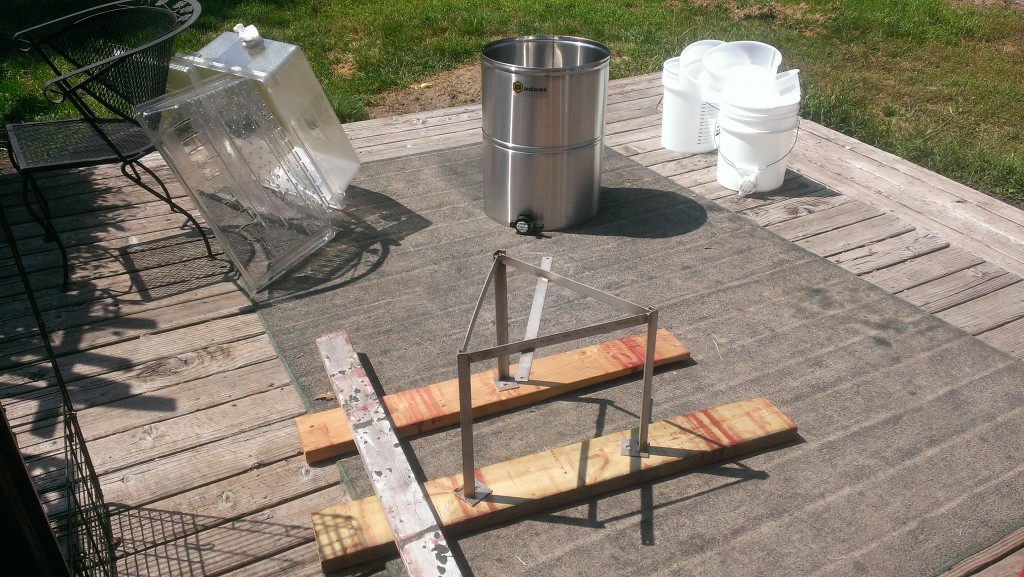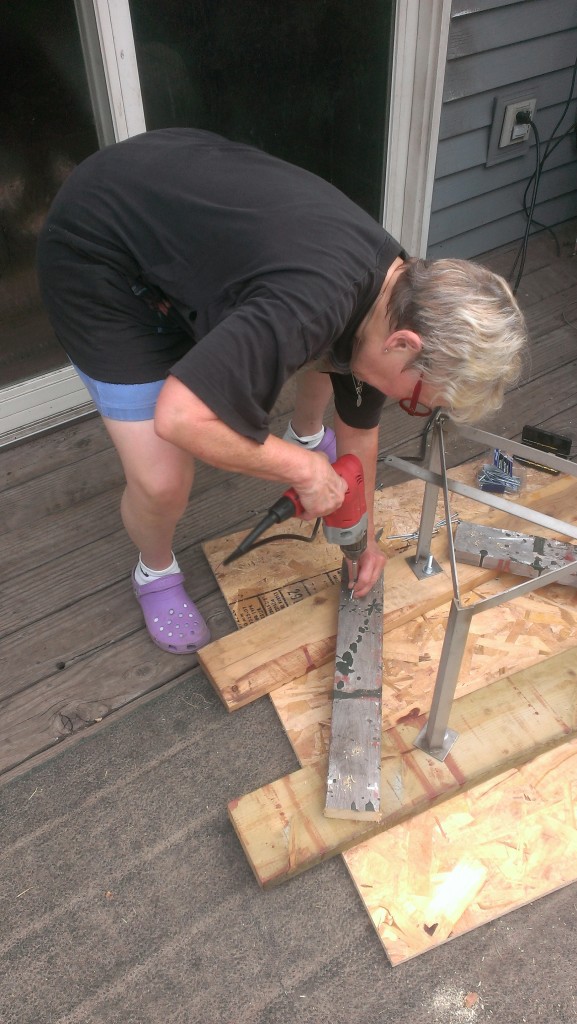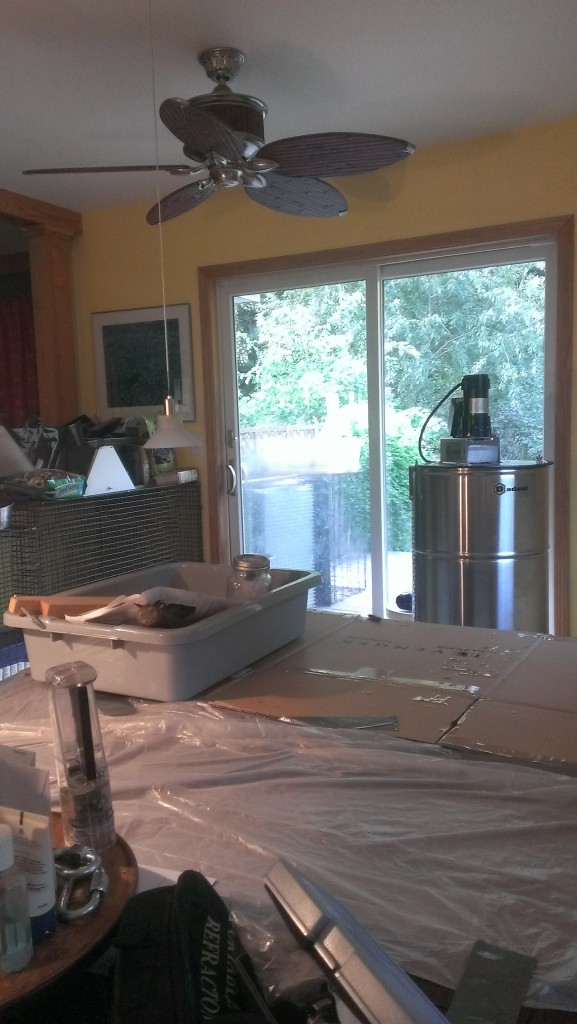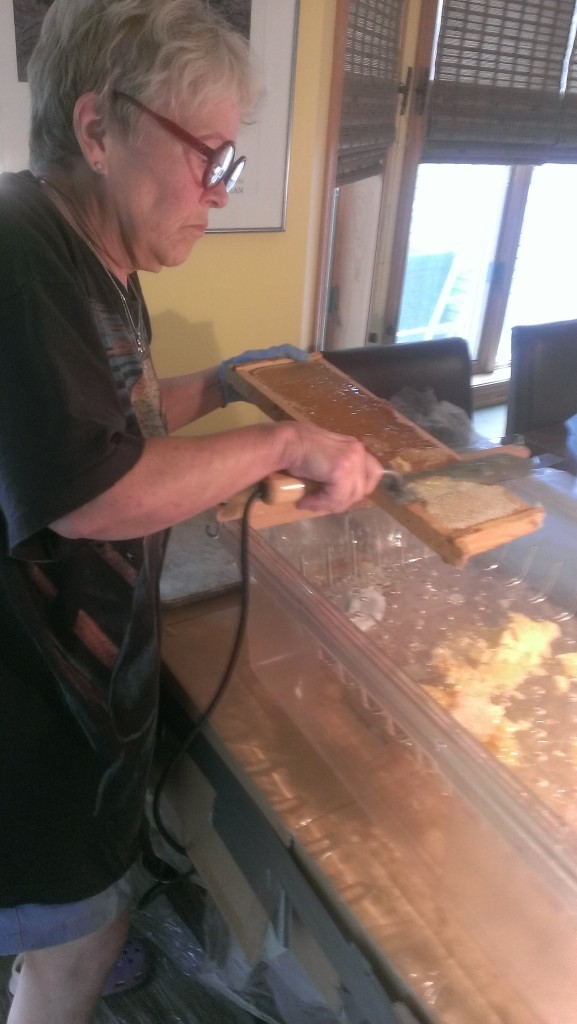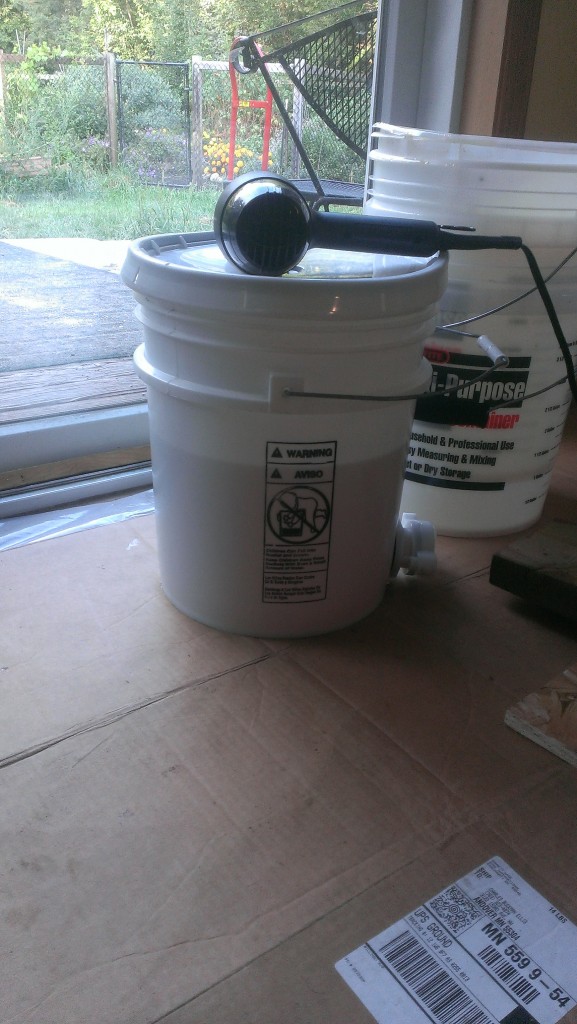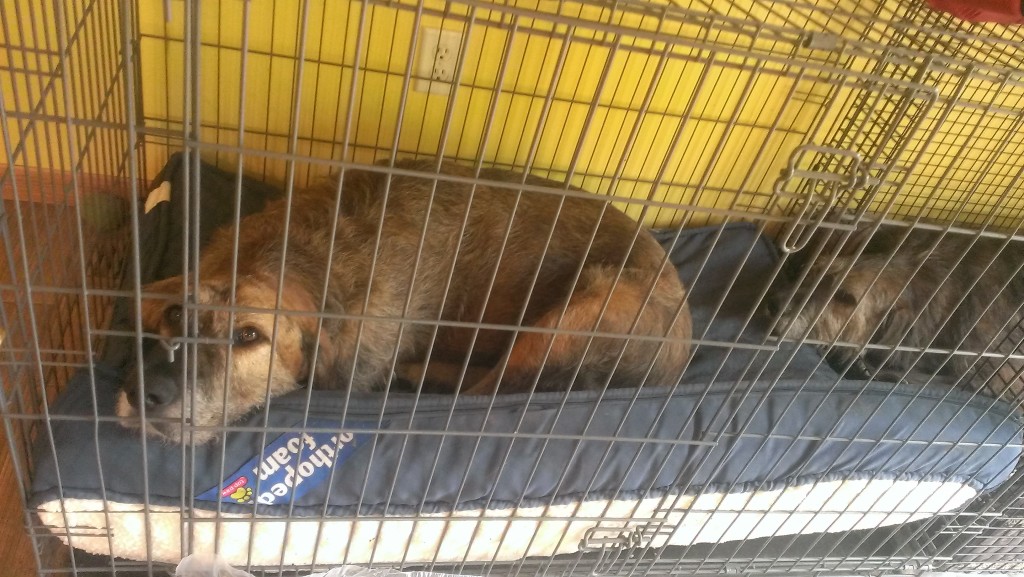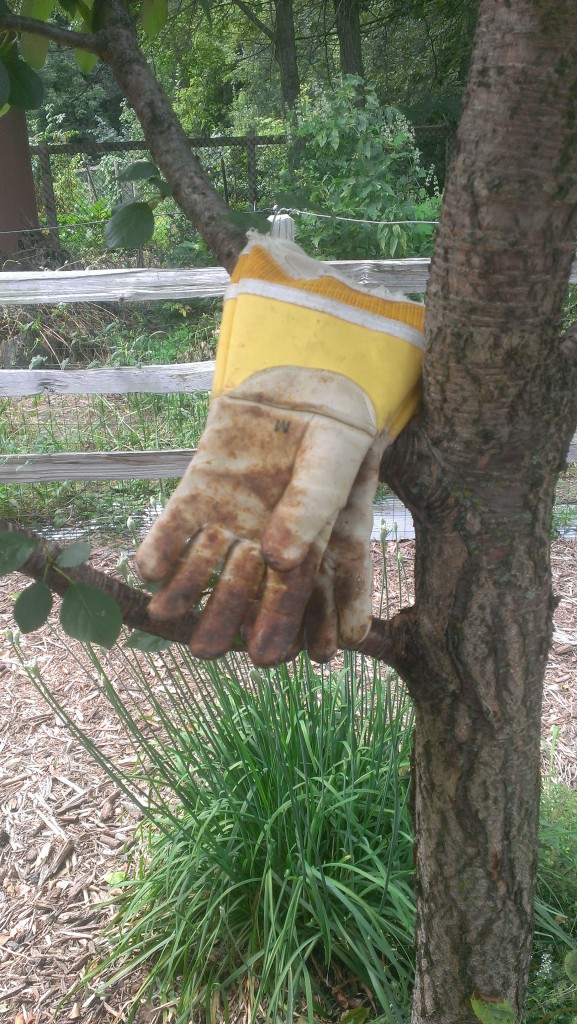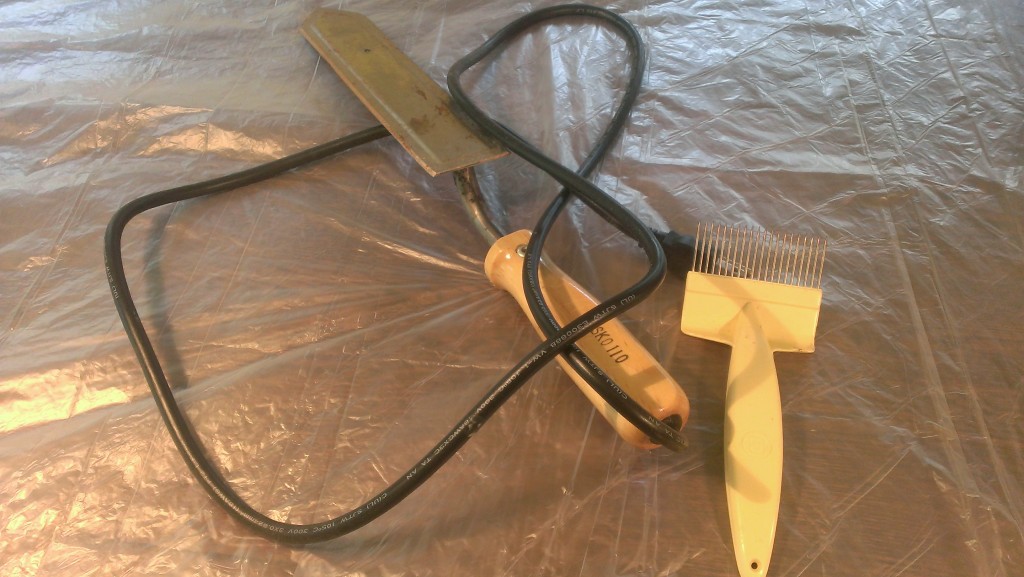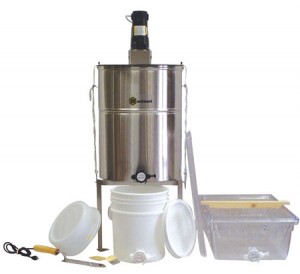Lughnasa Honey Moon
Everything has the dust washed off the extractor, the uncapping tub, the pail with the 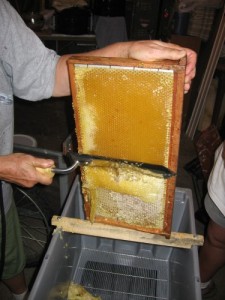 honey gate, the three filters, the five gallon pails to hold the honey before bottling. Kate has made cloth covers for the honey supers. When I push the bees out with honey robber, I’ll put the supers on a pallet on a two-wheel dolly, then cover them so the bees don’t swarm back on the frames.
honey gate, the three filters, the five gallon pails to hold the honey before bottling. Kate has made cloth covers for the honey supers. When I push the bees out with honey robber, I’ll put the supers on a pallet on a two-wheel dolly, then cover them so the bees don’t swarm back on the frames.
The kitchen will not look like itself for quite a while tomorrow. Instead it will become our honey house with the extractor whirring, frames being uncapped with the hot knife, honey moving slowly through the filters, removing bee parts. There is no way to extract honey without it making a mess. The trick will be to have the mess end up on the plastic and the cardboard.
When we finish the extraction, we’ll still have honey in the uncapping tub since uncapping itself takes off some honey along with the cell’s white caps. That honey has to separate out from the wax and that can take awhile. The supers have to go back on the  colony for cleaning. The bees will clean them up, then they can be removed and stored for the winter.
colony for cleaning. The bees will clean them up, then they can be removed and stored for the winter.
After we complete those steps, we’ll bottle honey using the five-gallon pail with the honey gate. At some point later we’ll put on the Artemis honey labels. Up to this point I’ve not learned how to work with the wax, but I plan to do that over the next few weeks. I want to make candles.
Of course, the bee keeping doesn’t end with the honey extraction. In fact, after I get the honey supers in the house, I still have to remove last weeks hopguard strips and put in this weeks, the final treatment. This is for varroa mites. Also, I’ll need to check, sometime in the next few weeks, the honey supply the colony has for the winter. If it’s 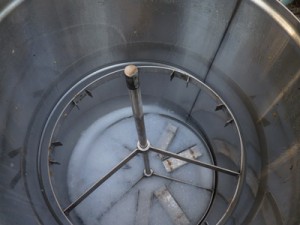 inadequate, I’ll have to feed the colony to prepare them for winter.
inadequate, I’ll have to feed the colony to prepare them for winter.
There is yet more to do after that. I have trees to cut down and brush to remove for the new bee yard. Leveling out four colony bases and moving this colony back there will happen later in the fall or early winter.
My current plan is to have four colonies on a regular basis. That means buying one more package next spring if this one overwinters and I can divide it. In 2014 I would have three colonies, a parent, a divided colony and a package. If I can maintain their health, then the parent colony will die, this year’s divide will divide in 2015 to form two colonies and the 2014 package will divide in 2015, getting me up to the four that I want to maintain.

